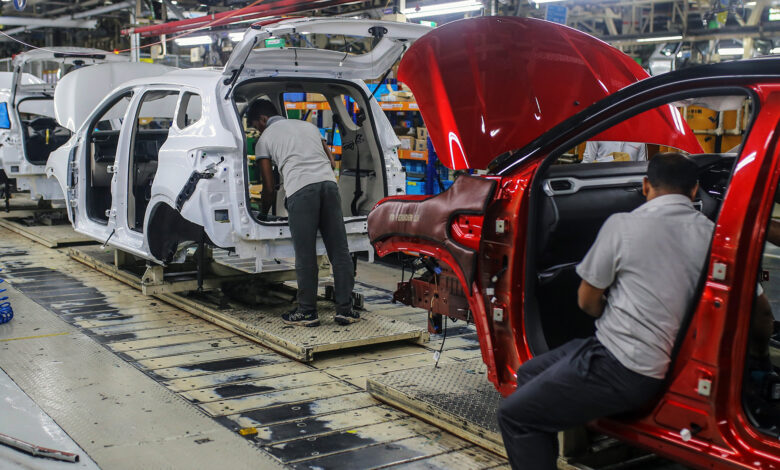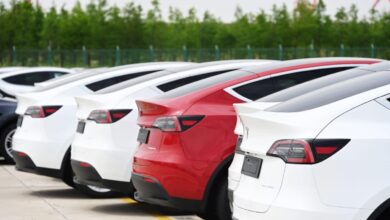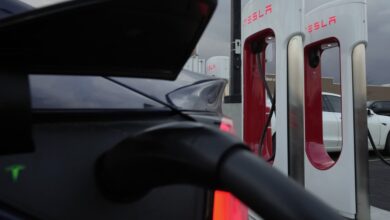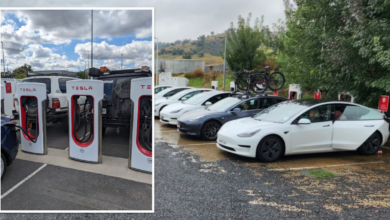Huge auto manufacturer takes high-tech Tesla-inspired approach to building future EVs that will cut costs by 30%

A CAR manufacturer has decided to follow in Tesla’s footsteps and lower the cost and weight of its electronic vehicles with advanced technology.
Other brands including Toyota, Hyundai, and Ford have already implemented this technology in their electric vehicle-building process.
Nissan plans to adopt gigacasting in their cars by 2027, which will lower overall expenses of the build by 30%, saving about $1 billion in development for five future car models, according to Inside EVs.
Gigacasting, which was pioneered by Tesla, is a manufacturing method that uses a casting machine to press large, singular pieces of the car’s structure.
This means that instead of assembling a car with many small parts, large sections of the vehicle, such as the back or front end, would be in one piece.
The technique reduces the number of components, slashes production costs, and allows for the easier assembly of lighter vehicles.
Nissan hopes to reduce the costs of EV parts by 10% and slash weight by 20%, Automotive News reported, according to the outlet.
WHAT’S THE PLAN?
The car manufacturer plans to use the press method to form the rear underbody, similar to the Tesla Model Y and Cybertruck.
The rear underbody of a Nissan electric vehicle currently has up to 100 parts.
To make the building process easier, those parts will be combined into single, giant pieces using aluminum casting in 6,000-ton presses, according to the outlet.
Nissan’s presses are smaller than Tesla’s which uses 9,000-ton presses from the Italian manufacturer IDRA.
However, they are still larger than Toyota’s 4,000-ton presses.
DISADVANTAGES
Though gigacasting could save money and time for big companies, there are still some drawbacks to the manufacturing technique.
Some disadvantages include the cost of the massive pressing machines and the challenge of integrating aluminum modules with steel parts in an EV’s structure.
The 6,000-ton press needed for Nissan’s future plans will cost over $6.4 million, according to ANP Management Consulting.
Steel and aluminum are challenging to weld together, so Nissan will have to put in new fastening methods, such as self-piercing rivets and drill screw technologies to hold it together, according to the report.
Electric vehicles vs gas
Pros and cons of EVs vs gasoline-powered vehicles
EV PROS:
- Convenient (when charging at home)
- Cheaper (depending on state or city)
- Cheaper maintenance, due to lack of mechanical parts
- Great for commuting
- Reduced CO2 emissions
- Federal and state tax incentives
- More performance (speed, handling – depending on the make and model)
EV CONS:
- Higher initial cost
- Higher insurance rates
- More frequent tire and brake replacement intervals
- Higher curb weight (thus causing more rapid wear on crucial parts)
- Low resale value
- High depreciation rates
- Lack of charging infrastructure
- Unreliable public charging (related: slow charging times)
- Poor winter and summer performance
- Lack of clean energy alternatives means more “dirty energy” from coal and nuclear sources
- Range anxiety
GAS PROS:
- Highly developed refueling infrastructure
- Fast refueling
- Cheaper insurance rates, depending on make, model, and configuration
- Established repair industry
- Lower initial cost
- Higher range before refueling, especially with hybrids
- Many manufacturers produce nearly emission-less engines
- Cheaper refueling, depending on the location
GAS CONS:
- Finite resource (related: heavy dependence on petroleum)
- Carbon emissions/greenhouse gases
- Higher repair costs
- Higher insurance rates, depending on make, model, and configuration
- Varying costs at the pump, depending on state, city, and county
Source: Car & Driver, Perch Energy, AutoWeek
NISSAN EV REVIEW
Ben Shimkus, a Motors Staff Reporter for The U.S. Sun, shared his opinion on the Nissan Ariya after his November 2023 and March 2024 encounters.
When he drove the car in 2023, his biggest issue was the draining battery and uncertainty of where he could charge the EV.
In 2024, Shimkus came across the car again at the New York International Auto Show and was happy to see some necessary improvements.
Inside the Ariya’s infotainment systems, the driver can ask the car to calculate a destination and it will also suggest charging stations during the ride.
The update saves driver’s time and minimizes stress.
Additionally, it will precondition the battery, allowing the car to charge faster at the stations.



